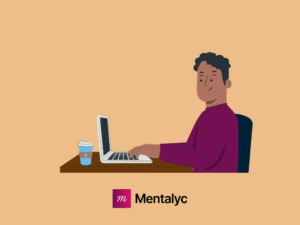If you’re looking for a problem-focused note format, consider writing PIRP notes to document your therapeutic sessions. PIRP notes are a method of clinical documentation used by many therapists and other mental health professionals. PIRP notes have four sections and are easy to write. So if you’re a mental health professional considering a new note format, PIRP notes may be the right style.
What is a PIRP note?
A PIRP note is a four-section format of clinical documentation. PIRP notes focus on the client’s presenting problem and what the therapist does in response to that problem.
PIRP notes stand for:
- Problem
- Intervention
- Response
- Plan
PIRP progress notes focus on the specific challenges your client is having and hone in on the specific interventions of the therapist to target that particular problem.
PIRP note sections
PIRP notes have four areas to address.
Problem
The P in the PIRP note stands for problem. The problem section emphasizes why the client is there.
Helpful information to include in the problem section includes:
- Any client symptoms
- Client complaints
- Client conditions such as depression, anxiety, etc.
In the problem section, you’re documenting a particular problem that is the focus of treatment. Consider adding client quotes to make this section a little easier.
Intervention
The I in the PIRP note stands for intervention. The intervention section emphasizes documentation of the therapist’s role in a therapy session.
In the intervention, you should include information such as:
- Anything the therapist did to help the client with their stated problem
- Any skills the therapist modeled for the client
The intervention section tells you how the client is progressing in therapy and shows the work the client and therapist are both doing.
Response
The R in PIRP notes stands for response. In the response section, you will document how the client responds to the therapist’s interventions from the intervention segment.
The response section should include information such as:
- Client’s feelings and attitudes about therapy
- Helpful and unhelpful interventions from the therapist, as stated by the client
- If the client’s symptoms are improving
The response section helps you document how the client is doing in therapy and where treatment should progress.
Plan
The second P in the PIRP note stands for plan. Many note formats include a plan section.
The plan section includes information like:
- When you’re going to meet with the client again
- Any client homework
- Any referrals to other organizations or providers
The plan section always tells you what should happen next.
Sample PIRP note Example
Here’s a sample of what a PIRP note may look like for a client with depression.
Problem
The client reports that they have been having trouble sleeping. The client states, “I either sleep for 12 hours or 2-3 hours; when I’m feeling down, I have no energy during the day, no matter how much I sleep.” The client also reports difficulty engaging in activities they previously found pleasurable such as exercising and playing their guitar. They say that this is often due to their lack of energy.
Intervention
The therapist addressed the client’s problem with sleep by assessing how long this has been going on, inquiring about caffeine, and discussing energy levels with the client. The therapist educated the client on sleep hygiene and tips for better sleep quality. The therapist additionally discussed barriers to engaging in their hobbies with them. The therapist encouraged them to find an accountability partner or set timers to try 10-15 minutes of participating in one of their hobbies.
Response
The client was receptive and voiced an understanding of sleep hygiene tips. The client reports that they think reducing their caffeine and screen time before they go to bed may be helpful. Additionally, the client states that they believe the timer method would help them re-engage in their hobbies. They do not think having an accountability partner for engaging in their hobbies would be helpful. The client reports that they are happy they are finally involved in therapy and don’t want to feel the way they have been feeling anymore.
Plan
The therapist and client will meet again on Friday at 1 p.m. for a session. The therapist assigned the client homework to silence their phone an hour before bed and to try engaging in either exercising or playing their guitar 10-15 minutes one time before the next session.
Benefits of PIRP notes
Writing notes PIRP progress note format allows you to focus on a specific problem the client has so that you can tailor your interventions to this problem. PIRP notes are an easy-to-read format that can help readers of your notes and clinicians follow along with what is occurring in the therapy process. These notes aren’t time-consuming, and you can document them pretty quickly. If you follow a PIRP note template, you may be able to record your sessions faster.
Because of their standardized format, you can quickly follow a specific problem or condition. In addition, PIRP notes are problem-focused, so you can see in real-time what interventions are working and what aren’t.
PIRP notes vs. SOAP notes
PIRP notes and SOAP notes are very different forms of documenting psychotherapy. They both are comprised of four different sections.
The PIRP notes are problem-focused and emphasize the therapist’s interventions and client responses. PIRP notes concentrate on specific actions of the therapist relative to their presenting problem and discuss how the client is responding.
SOAP notes, however, document the client’s subjective and objective behaviors in the first two sections. Comparatively, PIRP notes don’t have subjective and objective units, though client behavior can often be recorded in the problem area of a PIRP note.
SOAP notes also include an area for assessment where a therapist can document their clinical observations. However, PIRP notes only discuss how the therapist intervened and how the client responded to those interventions.
As with most note formats, the PIRP and SOAP notes include a plan section. The plan section consistently documents what comes next regarding the client’s treatment.
PIRP notes vs. DAP notes
PIRP notes and DAP notes also have more differences than similarities. For example, DAP notes have three sections, while PIRP notes have four.
DAP notes start with a data assessment section. DAP notes include all information about the client in the first data section, followed by an assessment section which contains clinical information from the therapist.
PIRP notes address problems, interventions, and responses. The only overlapping part of these note types is the plan section, and most methods of note documentation include a plan section.
PIRP notes vs. GIRP and BIRP notes
Finally, PIRP notes are very similar to both GIRP and BIRP notes. The only difference between these three note formats is the first section. these notes are problem-focused, and the problem section is addressed first. GIRP notes are goal-focused, and the goals area comes first in a GIRP note. BIRP notes are behavior focused and address behavior in the first section.
The rest of the format in all three note types is the same. For example, PIRP, GIRP, and BIRP notes include intervention, response, and plan segments.
Tips for writing PIRP notes
If you want to write PIRP notes faster, here are some tips to help you master this type of clinical note more quickly.
- Quote what your client says in the problem section
- Use a list of intervention words for the intervention section
- Ask your client what they are finding helpful and unhelpful in therapy to include in the response section
- Follow a PIRP notes template
- Include only the necessary information
The more you write these notes, the easier it becomes to master the format.
In the problem section, it may be helpful to ask yourself these questions to assist you with documentation:
- Why is the client here?
- What symptoms are they reporting?
- What are some of the challenges they are facing?
- What is the client’s diagnosis, if there is one?
In the intervention section, you might ask yourself these questions to help with your note:
- What support did I provide for my client in session today?
- Did I teach or model anything new to my client?
- How am I working to address the client’s problem?
In the response section, you may consider these questions:
- What is my client saying about the interventions I’m using?
- Has my client reported that any skills or interventions are helping them?
- Are there skills or intervents that haven’t worked for my client?
- What are some of the client’s obstacles that they are facing to implementing interventions?
- Did I use any outcome measures to assess the progress of the client?
In the plan section, ask yourself these questions:
- When is the date and time of our next session?
- Did I assign the client homework?
- Is the client going to follow up with any outside referrals?
- Did I provide any external referrals to the client?
- What will the focus of our next session be?
If you use these questions as a guide, the PIRP notes should be easy to write, and you can have the format mastered quickly.
Mentalyc can be a great alternative to manually writing progress notes in PIRP format. This note-taking app is able to quickly parse through clients’ information from the session recording and generate clinically accurate, personalized notes that are compliant with current standards. It also reduces the amount of time needed for documentation, allowing mental health professionals more time to spend with their clients.
Furthermore, this technology can help provide a more comprehensive view of a client’s progress, which could prove invaluable in determining diagnosis or treatment plans. All in all, Mentalyc is certainly a viable option for those looking to save hours and reduce risks when documenting progress notes.
Disclaimer
All examples of mental health documentation are fictional and for informational purposes only.








